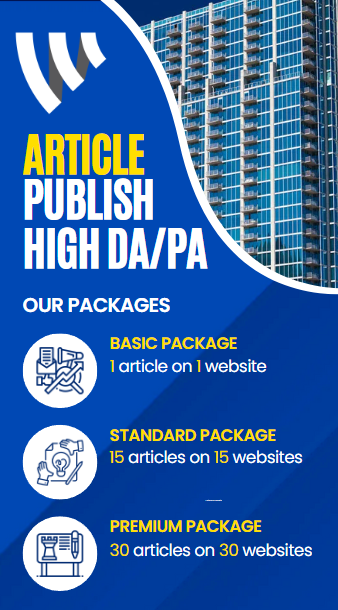In the dynamic world of business, risks are inevitable. However, not all risks are treated equally, especially when it comes to business insurance. Understanding what constitutes an insurable risk is crucial for businesses to protect themselves adequately.
What Is an Insurable Risk in Business Insurance?
This article delves into the concept of insurable risks, their characteristics, types, and importance in the realm of business insurance.
Introduction to Insurable Risks
In the realm of business, risk is synonymous with uncertainty. Whether it’s the threat of property damage, liability claims, or natural disasters, businesses face a myriad of potential risks that could disrupt operations and lead to financial losses. Business insurance serves as a safety net, providing financial protection against these risks. However, not all risks are insurable.
Understanding Risk in Business
Before delving into insurable risks, it’s essential to grasp the concept of risk itself. In the context of business, risk refers to the probability of an event occurring that could have a negative impact on objectives. These events can range from minor setbacks to catastrophic disasters, highlighting the importance of risk management strategies.
Definition of Insurable Risk
An insurable risk is a risk that meets certain criteria and can be covered by an insurance policy. In essence, it is a risk that an insurance company is willing to assume in exchange for premium payments. Insurable risks are characterized by their predictability, measurability, and the ability to transfer the risk to an insurer.
Characteristics of Insurable Risks
Insurable risks possess several key characteristics that distinguish them from non-insurable risks:
- Probability: Insurable risks are events with a calculable probability of occurrence.
- Measurable: The potential loss associated with an insurable risk can be quantified in monetary terms.
- Definite: Insurable risks are specific and well-defined, allowing insurers to assess the likelihood of occurrence accurately.
- Non-catastrophic: Insurable risks typically involve individual or localized events rather than widespread catastrophes.
There are three main types of insurable risks:
- Pure Risk: Involves the possibility of loss or no loss, with no chance of gain. Examples include theft, fire damage, and natural disasters.
- Speculative Risk: Involves the possibility of loss, gain, or no change. Speculative risks are typically associated with investment activities and are not insurable.
- Fundamental Risks: Risks that affect society as a whole and are beyond the control of individuals or businesses. Examples include war, inflation, and political instability.
Importance of Identifying Insurable Risks
Identifying insurable risks is essential for businesses to mitigate potential losses effectively. By understanding which risks are insurable, businesses can tailor their insurance coverage to address specific threats, ensuring comprehensive protection against unforeseen events.
Factors Affecting Insurability
Several factors influence the insurability of a risk, including:
- Loss Severity: The potential magnitude of loss associated with a risk.
- Frequency of Loss: How often a particular risk event is likely to occur.
- Predictability: The degree to which the occurrence of a risk event can be forecasted.
- Control: The extent to which businesses can implement measures to mitigate or prevent the risk.
Examples of Insurable Risks
Insurable risks come in various forms, including:
- Property Damage: Losses resulting from damage to physical assets such as buildings, equipment, and inventory.
- Liability: Legal obligations arising from third-party claims for bodily injury or property damage.
- Business Interruption: Loss of income due to disruptions in business operations, such as natural disasters or equipment failure.
- Worker’s Compensation: Coverage for medical expenses and lost wages for employees injured on the job.
- Product Liability: Protection against claims stemming from defective products causing harm to consumers.
Insurable vs. Non-insurable Risks
While insurable risks can be transferred to an insurer through an insurance policy, non-insurable risks are those that insurers are unwilling or unable to cover. Non-insurable risks may include speculative investments, intentional acts, and events deemed uninsurable due to their catastrophic nature.
How Businesses Manage Insurable Risks
Businesses employ various risk management strategies to address insurable risks, including:
- Risk Avoidance: Eliminating activities or exposures that pose significant risks to the business.
- Risk Reduction: Implementing measures to mitigate the likelihood or severity of potential risks.
- Risk Transfer: Transferring the financial consequences of risks to an insurer through insurance policies.
- Risk Retention: Accepting certain risks and covering potential losses internally without insurance.
The Role of Business Insurance
Business insurance plays a vital role in protecting businesses against financial losses resulting from insurable risks. From property and liability insurance to specialized coverages tailored to specific industries, insurance policies provide peace of mind and financial security for businesses of all sizes.
Challenges in Insurable Risk Management
Despite its benefits, insurable risk management poses several challenges for businesses. These may include rising insurance premiums, coverage limitations, and the complexities of assessing and quantifying risks accurately.
Future Trends in Insurable Risk Assessment
Advancements in technology, data analytics, and risk modeling are poised to revolutionize the field of insurable risk assessment. Predictive analytics, machine learning algorithms, and real-time risk monitoring tools will enable businesses to make more informed decisions and proactively mitigate potential risks.
Conclusion
In conclusion, understanding what constitutes an insurable risk is essential for businesses to safeguard their financial interests effectively. By identifying, assessing, and managing insurable risks, businesses can mitigate potential losses and ensure continuity in the face of adversity.
FAQs:
What is the difference between insurable and non-insurable risks?
- Insurable risks are those that insurance companies are willing to cover through insurance policies
